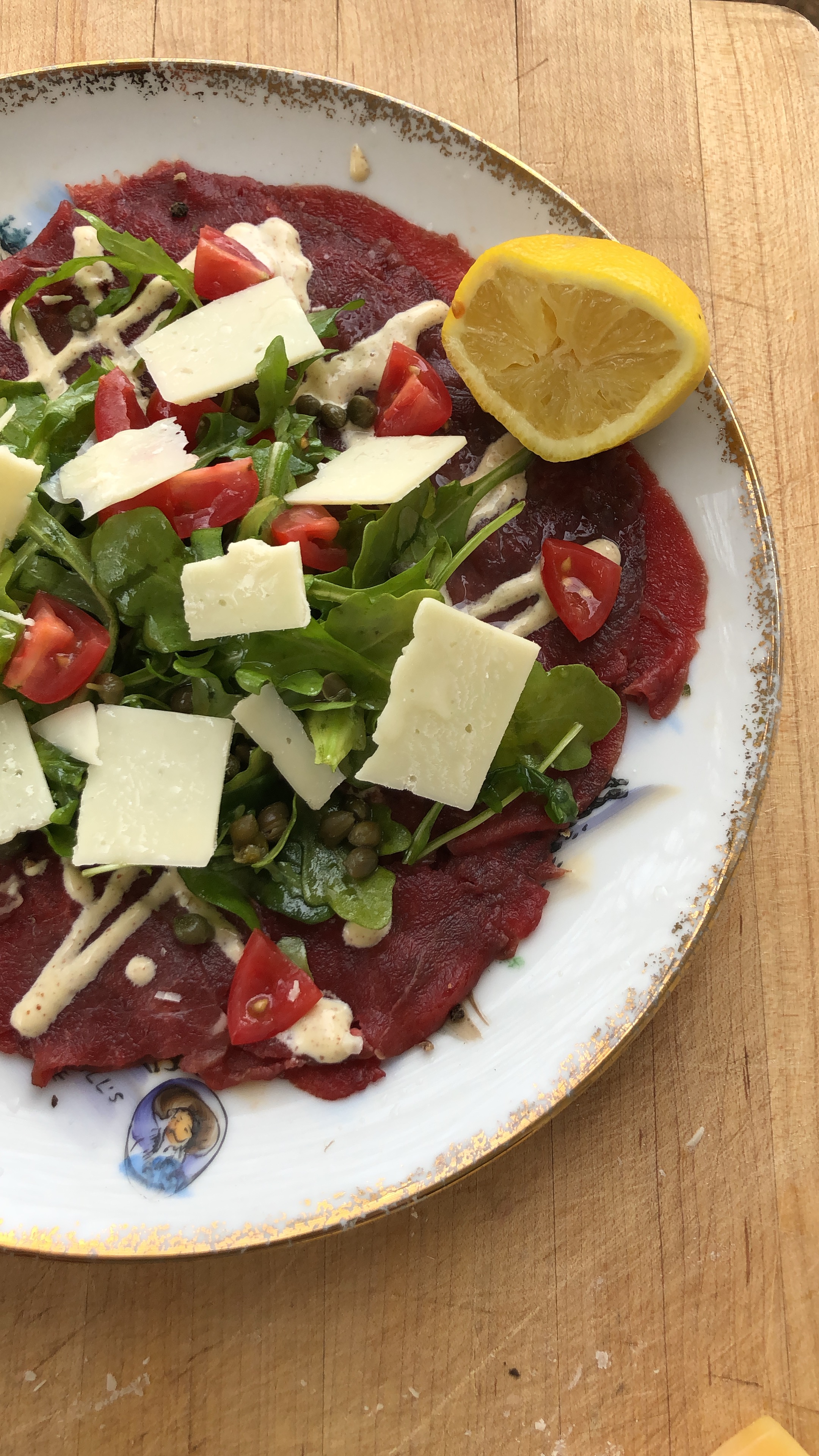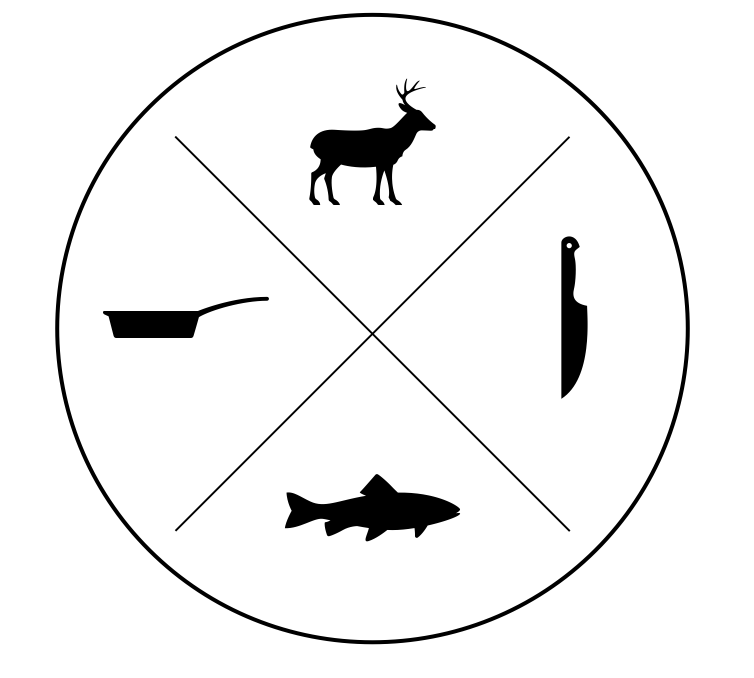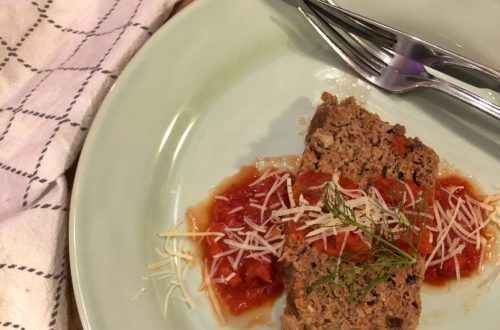
Recipe: Venison Carpaccio
I was introduced to carpaccio about a year ago while doing prep work in a commercial kitchen. At the time, we used beef eye of round from steamship rounds we butchered in house. This is an exceptional cut for carpaccio, but in the back of my mind I had a feeling that venison loin would be even better. It turns out I was right.

Carpaccio first arrived on the culinary scene in 1950, dreamed up by an Italian restaurateur named Giuseppi Cipriani. Cipriani was the owner and founder of Harry’s Bar in Venice, a one-time haunt of Ernest Hemingway, Orson Welles, and Truman Capote just to name a few.
The dish itself is deceptively simple, the only real requirements being thinly sliced raw meat (usually red meat, sometimes fish), carefully arranged on the plate in a disc-like formation with a dressing of mayonnaise-based sauce painted across the surface.

In it’s best incarnation though, carpaccio incorporates other elements in addition to the sauce: things like capers, olive oil, a squeeze of fresh lemon and some thinly sliced ribbons of parmesan cheese.
How to Make Venison Carpaccio
Carpaccio is a great way to make use of your freshest venison loin, and it gives the hunter a rare-opportunity to taste game meat in its most natural form—completely raw. Serve it alongside some crusty french bread with a good pilsner or witbier.
Ingredients
One 12 ounce cut of cleaned and trimmed venison loin
4 cups arugula
1 cup cherry tomatos, halved
4 Tablespoons capers
2 lemons
1 wedge of parmesan cheese
1/2 cup mayonnaise
2 tablespoons dijon mustard
olive oil
course ground sea salt
fresh-cracked pepper
Procedure
For the hunter, the first step to proper carpaccio preparation begins on the butcher block. Once you’ve removed the loins from the animal, set aside a 12-ounce portion, trim it meticulously, taking care to remove every trace of silver skin and sinew, then wrap it tightly with saran wrap and place it in the freezer. If you intend to freeze it for a long period of time, use freezer paper, if not, plain saran wrap is fine.
Note: Do not use a vacuum sealer when freezing loin for carpaccio as you want to loin to retain its somewhat cylindrical shape.
Once it’s completely frozen, remove the loin from the freezer. If you have access to a meat slicer, go ahead and begin slicing the meat while it’s still frozen on the thinnest setting you can manage. If not, let the meat thaw just enough so that you can successfully slice it with a chef’s knife, cutting as thinly as you can muster. If free handing the cuts, you may want to lightly pound them with a meat mallet, rendering them thinner yet. If you do this, make sure to place the cuts between two layers of plastic wrap prior to pounding and tap with the mallet very slightly, otherwise the thin slices will more less disintegrate under its weight.
As you make the cuts, arrange them on the serving plate until they take on the shape of the plate itself. This recipe calls for enough ingredients to make four equal servings, so adjust accordingly if serving more or less.

When the carpaccio is arranged on the plate apply a pinch of coarse sea salt, then set it aside as it continues to thaw. Once it’s completely thawed, it’s time to add the sauce. Use a simple mix of 3 parts Duke’s mayo, 1 part dijon mustard. Mix the sauce with a whisk then funnel it into a squeeze bottle and apply it in a zig-zag type pattern across the entire surface of the carpaccio. Now sprinkle on the capers, using 1 tablespoon per serving.
Set that aside and begin mixing your salad of arugula, halved cherry tomatoes, olive oil, salt and pepper. Each serving should get about a cup of salad, mounded up in the middle of the carpaccio but not completely covering the dish.
Using a cheese slicer, cuts some thin ribbons of parmesan and add the cheese to the dish per your personal preference. Squeeze the juice of one halved lemon onto the carpaccio for brightness, grind some more black pepper on top, serve, and enjoy!



